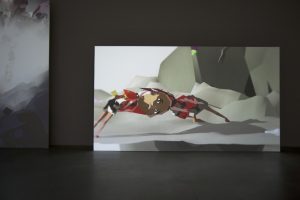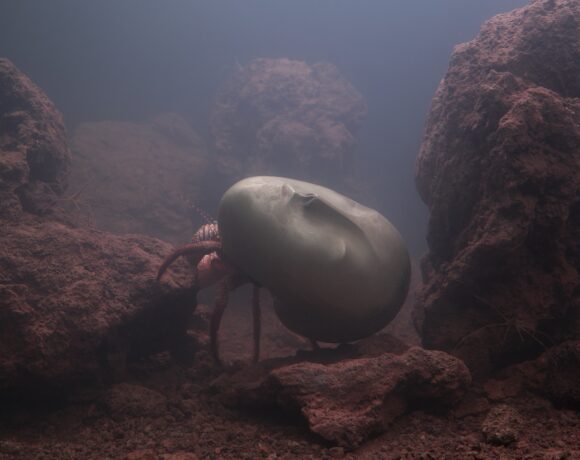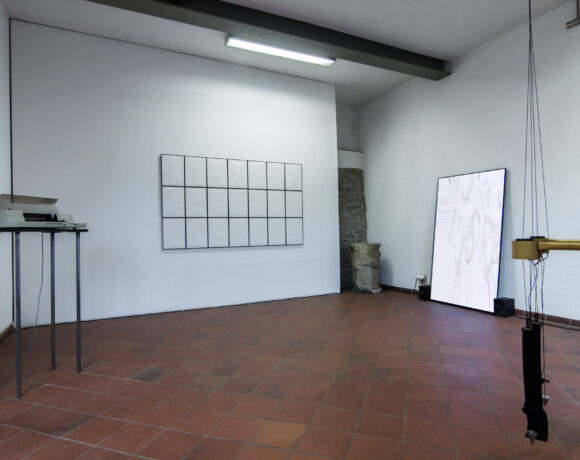If in the second half of the twentieth century, the use of the first computers for artistic purposes coincides with an epochal revolution since it is precisely computer technology – assumed as a new paradigm – that begins to analyze and translate the processuality of the artistic sign into calculations, in our century it is the virtual to determine exponential and unprecedented historical changes. The use of computers has attributed to information technology the task of translating data, information and software capable of creating algorithms of all kinds (even those for games) with the launch of virtual realities that have led to digitized art, defining a new way of perception of one’s self and of the world in its dual real and virtual dimension. Computers, as devices capable of entering everyone’s minds, have radically changed our way of perceiving reality, given the exponential accumulation of data, information and variables that they infinitely provide.
The ability of computers to recreate virtual environments, through specific software, was analyzed by the German artist, journalist, playwright, director – professor at the Vienna Academy of Fine Arts – Harun Farocki (born in 1944, prematurely died in 2014). He explored how video game technology is used to train US troops for war purposes and also to analyze the effect of war – Post Traumatic Stress Disorder – on the US military. His videos from the Serious Game series (2009-2010) – shot at the United States Marine Corps Ground Air Combat Center – were exhibited at the MoMA in New York, which also offers an online gallery of the German artist’s installations. In Serious Game Farocki analyzes how much the size of a video game, which faithfully reproduces the modalities of a war attack, has a strong implication on the minds of those who are exposed to this vision, thus pushing the public to reflect on the powerful role exercised by the media and by any immersive representation, typical of video games and more.
If we remain, in this regard, in the immersive field of video games, the American artist Ian Cheng (born in 1984) stands out with his video games such as Emissaries, defined by the artist as “a video game that plays alone”, in which wild animals and virtual characters interact in a constant narrative dimension, which evolves indefinitely within an autonomous ecosystem, generated by a predictive technology, such as that used for complex simulations (elections or climate change). Cheng himself declares in an interview reported on the MoMa website – that bought this trilogy by the artist, giving further space for reflection and exposure to the theme of video games – how fundamental the narrative aspect is and the fact that one create stories with infinite variables in its virtual ecosystem.
In Italy the Sandretto Re Rebaudengo Foundation in 2015 hosted the first Italian exhibition of Cheng with an episode of his trilogy or Emissary in the Squat of Gods, showing great attention to algorithmic modeling, the same principle of video game and game design articulated as simulations to perform neuronal gymnastics. This first episode by Ian Cheng focuses on the developments of cognitive evolution, based on the writings of Julian Jaynes. The driving force is the perception of consciousness and how it has changed and been destabilized in responding to the complexity of the ever-changing world. The result, therefore, is a virtual ecosystem with the subjects of the video game in basic narrative structures that can endlessly change and develop in algorithmic sequences because, according to Cheng, art can make us fall in love with systems linked to complexity and the brain itself is a muscle to be trained through the narrative dimension, given above all by immersive and virtual reality.
It is perhaps no coincidence that the identity of our century, crossed by the first major pandemic since Covid 19, is also transforming the way of enjoying art with immersive effects to be experienced even at a distance. Thus, if the protagonists of Ian Cheng would seem exposed and predisposed to the infinite capacity to adapt and change, despite the chaos, the confusion generated by the continuous threats to which they are exposed to face the anxiety of change, it suggests that perhaps contemporary humanity is not yet trained.
By now, the narrative idea of virtual-immersive art is changing all of us with the ever more constant need to create content and stories in social networks or in the digital world of media because it is in our minds that the greatest revolution of perception about the things of the world. The point is to understand if we are aware of it a or we have already forgotten it. In this direction, we can better understand Ian Cheng’s message to train our mind for chaos and find ourselves. Instead of being overwhelmed.
Info:




Ian Cheng, The Emissary In the Squat of God, 2015, installation view at Fondazione Sandretto Re Rebaudengo, Torino, photo Maurizio Elia, courtesy Fondazione Sandretto Re Rebaudengo

Through art she feels the need to get closer to nature, deciding to create an artistic residence on Etna as a “refuge for contemporary art” for artists and scholars. Thus was born Nake artistic residence. She won the Responsible Etna Award 2015. In 2017, she was invited to the Sala Zuccari, Senate of the Republic, as an art critic. She writes for Italian and foreign artists. Curator of the first Museum of Contemporary Art of Etna and of the “Contemporary Etna” project.






NO COMMENT